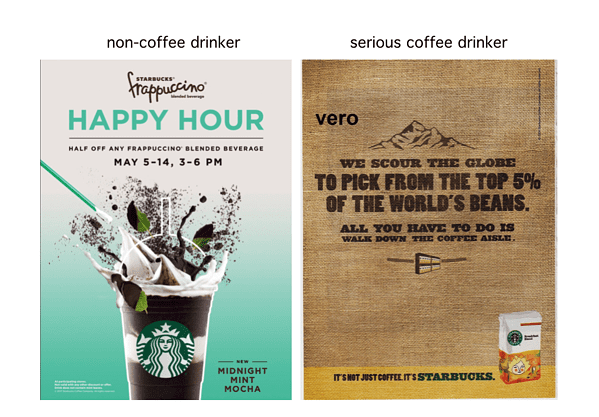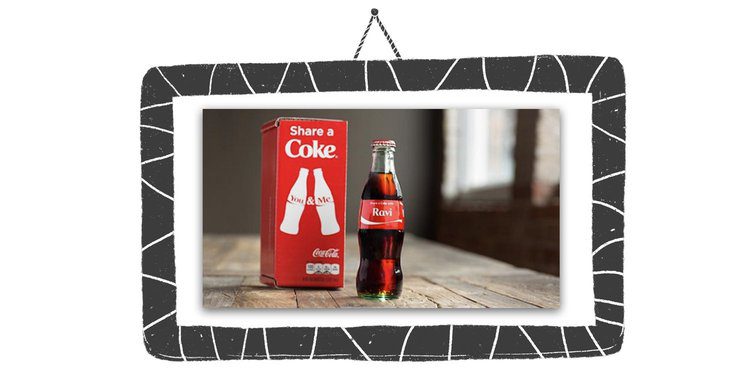Psychographic segmentation is one of those classy terms you may have never heard of, but I’m sure that you have constantly used the concept. Actually, It is one of the main deciding factors in your life. Every aspect of your life needs decision-making. For each decision you make, whether you realize it or not, you are using psychographic segmentation.
You choose your friends, your life partner, your career path, your home, and your sources of entertainment, even the movies you watch, based on psychographic segmentation.
So, what exactly is the definition of psychographic segmentation, and what are some business-related examples of it? Read this article to figure it out!
What is psychographic segmentation?
Psychographic segmentation is a relatively new method of market segmentation. Marketers have been using it alongside other market segmentation approaches (i.e., demographic, behavioral, and geographic segmentation). Psychographic segmentation values internal characteristics and qualifiable data. On the other hand, the different types of customer segmentation are based on quantifiable information.
Psychographic segmentation is the practice of dividing your customers into groups based on criteria about their characteristics. This way, you will know the personality traits of each of your customers.
Psychographic segmentation is crucial for your marketing strategies because, as previously mentioned, these are the type of traits that affect every aspect of your customers’ lives. From their level of consumption to every decision they make, they act based on these traits.
Using this knowledge, you can make your products (and also alter your marketing strategies) in a way that matches what they need and want. As a result, you will see your business’s profits escalate tremendously.
Surveys, quizzes, customer interviews, third-party providers, and social media polls are great ways to collect the data you are searching for as a digital marketer.
Another sure-fire way is website activity tracking. Website visitor tracking lets you exceed your revenue goals by tracking your users’ behaviors.
psychographic segmentation Examples
Well, sure! There are lots of psychographic segmentation examples that famous brands have implemented in their marketing strategies.
As an illustration, Starbucks divides its customers into two groups: “Non-coffee drinkers who still want to socialize” and “serious coffee drinkers.” One reason they have turned out to be so successful with their customers is the fact that their marketing campaigns are based on these segments.

Coca-Cola’s “Share a Coke” campaign is another psychographic segmentation example.

Other famous companies implement this in their foundations. Apple segments its customers based on psychographics by aiming for customers who are fans of design simplicity. Nike also uses psychographic segmentation by targeting people who enjoy sports, whether by actually doing it or talking about it.
Psychographic segmentation criteria
There are different ways to categorize psychographics. Here I present to you what I found to be the most comprehensive.
Lifestyle
The lifestyle of your niche customer has a direct effect on their choices. If they are teenagers who are baggy clothes or some C-level executives who wear formal clothes all day long, if they are early birds or night owls, if they are more of a hard-working person or more of a chilling type, they are going to require different products, marketed in different ways that are specific to their own category. For example, an introvert who engages in more of a sedentary lifestyle might need gear and supplies to bring his entertainment indoors. In contrast, someone who is an outdoor kind of person needs tools for mountain climbing and parachuting.
As lifestyle is such a general term, I prefer to break it down to the AIO variables (Activities – Interests – Opinions). You can use other criteria measurements to achieve the same results as well.
Activities
People’s day-to-day life differs from one another but also has similarities. You must consider their common behaviors, individual preferences, and activities they perform from time to time (but still highly engages them) when you build a psychographic profile for them. Activities include work, leisure, social events, etc. It would help if you tried to answer several questions, some of which I will mention here:
- How often do they perform the activity?
- Is the activity mandatory?
- How deeply engaged are they in the activity?
- Do they spend money on the activity?
Interests
Due to different factors, people have different degrees of inclination towards different things. It is best to start looking for people’s interests comprehensively and then narrow things down. Interests cover family, home, career, passion, recreation, etc. Knowing their interests, you can precisely decide what you want to sell to each group of people.
Opinions
We hold different opinions, beliefs, and values, based on how we have been raised. These form the lenses through which we see the world. Also, people will develop comfort levels with you based on their opinions. Opinions shaped by themselves (childhood incidents, parents, etc.), social and political issues, business and economics, education, etc. Whether they have reached their opinions from facts and logical analysis, or personal experience and anecdotes, it is hard to change people’s views.
Social Status
Social status plays a vital role in people’s decision-making, broadly categorized into upper, middle, and lower classes. When it comes to making purchases, there is so many differences between the thought process of these groups. Having a 47-grand Rolex watch is not the primary concern of a worker, while someone in the upper class might have a collection of it.
Personality
Personality traits, such as neuroticism, extraversion, openness, agreeableness, and conscientiousness, form a person’s whole personality. This is a determining factor in how people perceive their surroundings. Also, this is the primary source of difference we see in people. This is why they have different tastes in things. Consider it as a pivotal component of their purchases.
A mixture of lifestyle choices, social status, and personality make people decide whether to make certain purchases or not. Remember this, though, that even if people are low on money but feel the urge to have your product, they will make it happen.
Conclusion
In this article, I gave you a definition of psychographic segmentation, some famous, real-world examples, its uses, and its criteria and values. By putting psychographic segmentation into effect, you will see a great deal of growth in your business and the profit you earn from it.


![Read more about the article 14 Best Simple WordPress Themes in 2022 [+Minimalist Themes]](https://www.hoothemes.com/wp-content/uploads/2022/09/14-Best-Simple-WordPress-Themes-to-Consider-Minimalist-Themes3-300x157.png)






